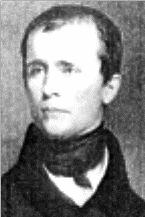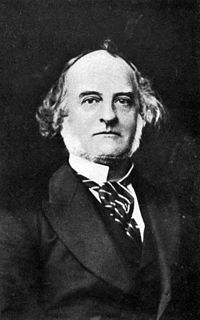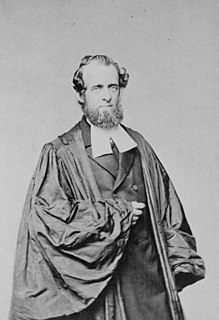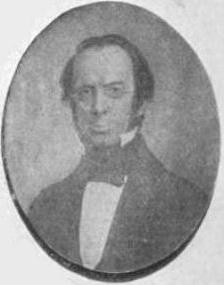The Biographical Directory of the United States Congress is a biographical dictionary of all present and former members of the United States Congress and its predecessor, the Continental Congress. Also included are Delegates from territories and the District of Columbia and Resident Commissioners from the Philippines and Puerto Rico.

Henry Coppée was an American educator and author.

Elbridge Gerry was an American lawyer, who served as a U.S. Congressman from Maine from 1849 to 1851.

Charles Jared Ingersoll was an American lawyer, writer and politician who served as a Democratic member of the U.S. House of Representatives for Pennsylvania's 1st congressional district from 1813 to 1815, Pennsylvania's 3rd congressional district from 1841 to 1843 and Pennsylvania's 4th congressional district from 1843 to 1849. He served as a member of the Pennsylvania House of Representatives in 1830.

Samuel Austin Allibone was an American author, editor, and bibliographer.

James Lanman was an American lawyer and politician from Connecticut who served in the United States Senate from 1819 to 1825. He was a cousin of Presidents John Adams and John Quincy Adams.

Chester Harding was an American portrait painter known for his paintings of prominent figures in the United States and England.

Tsuda Umeko was a Japanese educator, Christian, and pioneer in education for women in Meiji period Japan. Originally named Tsuda Ume, with mume or ume referring to the Japanese plum, she went by the name Ume Tsuda while studying in the United States before changing her name to Umeko in 1902.
William Duhurst Merrick was a United States Senator from Maryland, serving from 1838 to 1845.
James Milnor was a member of the U.S. House of Representatives from Pennsylvania for two years (1811–1813), a lawyer for 16 years, and an Episcopal priest for 29+1⁄2 years.

William Slocum Groesbeck was an American lawyer and politician who served one term as a U.S. Representative from Ohio from 1857 to 1859.

Alice Mabel Bacon was an American writer, women's educator and a foreign advisor to the Japanese government in Meiji period Japan.

Clement Moore Butler (1810–1890) was an Episcopal priest, author, and seminary professor who served as Chaplain of the Senate from 1850 to 1853.

James Ross Snowden was treasurer of the United States Mint from 1847 to 1850, and director of the Mint from 1853 to 1861.

Charles Deas was an American painter noted for his oil paintings of Native Americans and fur trappers of the mid-19th century.

Frederick Augustus Ludwig Karl Wilhelm Genth was a German-American chemist, specializing in analytical chemistry and mineralogy.
Caleb Jefferson McNulty was an American lawyer, newspaper editor and politician. Active in the Democratic Party, he became Clerk of the U.S. House of Representatives; while serving in this post he was alleged to have embezzled congressional funds; some charges were subsequently dismissed, and he was acquitted of the others. John Quincy Adams, then serving as a Whig member of the House, referred to the charges as a "memorable development of Democratic defalcation."
The following is a list of works about Philadelphia, Pennsylvania, U.S.

Mary Henderson Eastman was an American historian and novelist who is noted for her works about Native American life. She was also an advocate of slavery in the United States. In response to Harriet Beecher Stowe's anti-slavery Uncle Tom's Cabin, Eastman defended Southern slaveholding society by writing Aunt Phillis's Cabin: or, Southern Life As It Is (1852), which earned her considerable fame. She was the wife of the American illustrator and army officer Seth Eastman.

Christophorus Plato Castanis was an Ottoman Greek academic, author and classicist. Castanis was born at Livadia, Chios on 1 April 1814 and lived much of his life in the United States. He published an autobiography titled The Greek Exile in 1851, which told of his survival of the Chios Massacre, his time in Ottoman slavery, and his emigration to America.















